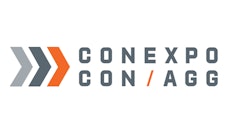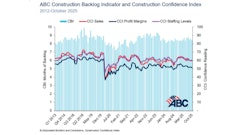
Information management isn’t just about staying organized. It’s about staying profitable. If you’re leading a busy architecture, engineering or construction firm (AEC), you’ve seen what happens when files get lost, RFIs slip through the cracks or your team spends hours chasing down the latest drawing. That waste adds up. The right information management system doesn’t just reduce headaches. It increases your bottom line.
You Lose Money When Information Is Scattered
Disorganized data isn’t just inconvenient, it’s expensive. Without single centralized and connected view of all project data, your team:
- Wastes time searching for files
- Misses deadlines because of outdated info
- Reworks previously done activities based on the outdated documentation
- Risks legal claims due to poor documentation
- Pays for software you don’t fully use
Each of these issues eats into your margins. And the bigger your firm, the faster it snowballs. Think about how much time your team loses each week chasing emails, redlines or approvals. Now multiply that across 250 people, 12 months and dozens of projects. The cost of working in silos isn’t just time - it’s lost revenue.
You don’t need a full tech overhaul. You just need a single view of truth for project data.
Real Numbers: The Cost of Doing Nothing
Let’s say you’re a typical 250-person architectural, engineering or construction firm.
Based on a 36-month financial model, here’s what happens if you skip implementing a centralizing view of your project data:
- You lose $1.4 million in net value over the 3-year period by doing nothing.
- Your internal rate of return stays stuck.
- You spend time and money fixing avoidable mistakes.
Now flip that. By implementing a solution providing a centralized and aggregated view, a typical AEC firm should expect:
- A 200% internal rate of return (IRR)
- Payback in just four months
Centralization Sets You Up for Growth
If you're planning to grow, win bigger projects or expand into new markets, disconnected systems will hold you back.
As teams grow and projects get more complex, so do the risks:
- Critical information gets buried.
- New hires struggle to find what they need.
- Collaboration slows down.
A centralized information management system scales with you. It keeps everyone aligned — across teams, offices and projects — without adding layers of complexity. You don’t just fix today’s problems. You build a stronger foundation for what’s next.
Where the Profit Comes From
A centralized view pays off in more ways than one. Here's where you’ll see the biggest impact:
- Fewer hours lost searching for files: With smart project search, your team finds what they need in seconds instead of hours. This means less wasted time, faster (and better) decision-making and better use of staff hours.
- Better communication management: Every email, RFI and submittal gets logged and tracked. That alone cuts down response times, miscommunication and exposure to risks.
- Cleaner document control: When everyone works off the same version of a document, you avoid rework, delays and budget creep.
- Enhanced project context: When your data is connected, you get a full view of your project. This helps you make faster, more accurate decisions. An initial email is connected to a resulting RFI which in turn is connected to the relevant drawings and specifications.
- Faster issue resolution: Track action items across the project lifecycle. Your team stays accountable. Your clients stay informed.
- Fewer legal risks: You’ve got a digital paper trail when you need it most. That means fewer disputes, an overall stronger claims defense and lower legal costs.
- Smarter software use: Stop paying for tools you already have. Too often, firms buy new software without realizing the same features exist in what they already own.
- Painless access to information: Whether you’re sitting in the office, walking around the site, attending a meeting or working from home, you’ll always have access to the right information — where and when you need it.
Impact by Role
The benefits of centralization aren’t limited to one department. They ripple across your entire team.
Project Managers
- Track RFIs, submittals and issues in one place.
- Get instant status updates.
- Spend less time chasing information.
Principals and Executives
- Gain real-time visibility into project risk.
- Reduce litigation exposure.
- Improve client satisfaction and profitability.
IT and Ops
- Simplify your tech ecosystem.
- Lower software and support costs.
- Reduce user friction.
Designers, Supervisor / Foreman and Admins
- Access the latest files without hunting.
- Minimize back-and-forth emails.
- Focus on high-value work.
It Doesn’t Have to Be Complicated
Most firms avoid change because they assume it will be painful. But centralized access doesn’t require a full system overhaul. It just takes a platform that connects the tools you already use.
Look for a solution that:
- Works with your existing systems
- Adds automation without adding admin work
- Keeps your team in familiar workflows
You don’t need more software. You need better connections between what you already have.
Want a Simple Test?
Ask your team two questions: How long does it take to find a submittal from last year, and how confident are you that everyone’s working from the latest drawing? If those answers aren’t “less than a minute” and “100%,” it’s time to centralize.
Final Word
You already know your projects run on tight timelines and tighter budgets. You can’t afford confusion, delays or duplicated work.
Centralized information management:
- Saves time
- Reduces risk
- Protects your profit
And in a larger firm, it can put over a million dollars back in your pocket. Let’s stop losing money to disorganization. Start using tools that give you clarity and a return on investment

















